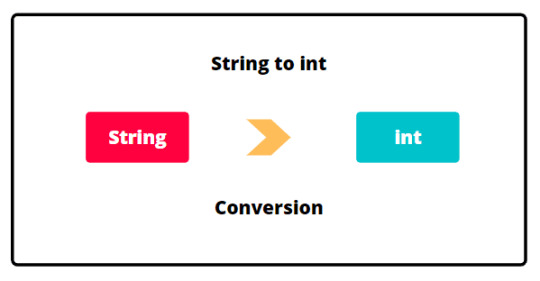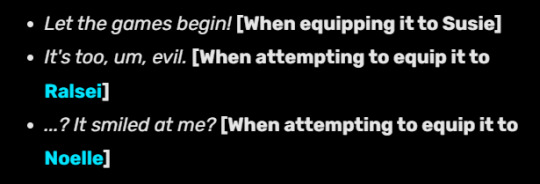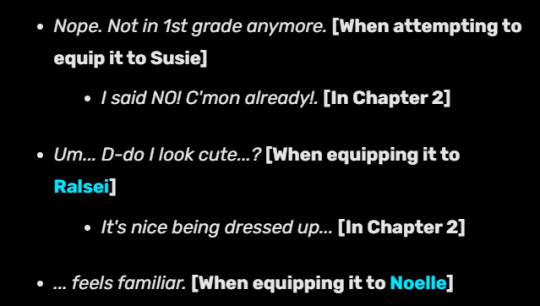#Java-String
Explore tagged Tumblr posts
Text

81 notes
·
View notes
Text

Example of Java String substring() Method
Let us see the example of Java String substring() method:
#java#programming#javaprogramming#code#coding#engineering#computer#computerscience#computertechnology#software#softwaredevelopment#education#technology#string#substring#online
2 notes
·
View notes
Text
Desafio Java: Ordenando Dígitos em Ordem DecrescenteIntrodução
Neste desafio, você irá criar uma função em Java que recebe um número inteiro não negativo e retorna esse número com seus dígitos reorganizados em ordem decrescente. O objetivo é encontrar a maior combinação possível dos dígitos do número original. Continue reading Desafio Java: Ordenando Dígitos em Ordem DecrescenteIntrodução
0 notes
Text
Convert a String to Date: A Time-Travel Adventure with Java!
So, you've got yourself a string that looks suspiciously like a date, and you want to turn it into an actual date object? Buckle up, because we're about to take a wild, time-traveling ride through Java's date-conversion landscape. This isn’t just some bor
So, you’ve got yourself a string that looks suspiciously like a date, and you want to turn it into an actual date object? Buckle up, because we’re about to take a wild, time-traveling ride through Java’s date-conversion landscape. This isn’t just some boring, mundane task—this is the art of converting strings to dates! Let’s make it fun, engaging, and with just the right amount of nerdy Java…
0 notes
Text
programming mergesort to do my battleship exchange signups like this, too, is studying,
#there is entirely no need for me to be doing this in practice to be clear. implementations of merge sort Already Exist in java#however. if i program it myself to alphabetically sort my list of freeforms. then i am studying for my algorithms & data structures exam#which is in two weeks#haha. sweats#(i also used sed to turn this manually typed comma-separated list into a string array. and felt cool about it. love sed thank you sed)#echo.txt#compsciposting
0 notes
Text
Java String to Int: A Comprehensive Guide for Developers
Introduction to Java String to Int: In the world of Java programming, converting strings to integers is a common task that developers encounter frequently. Whether you're parsing user input, manipulating data from external sources, or performing calculations, understanding how to convert strings to integers is essential.

In this comprehensive guide, we'll explore the various techniques, best practices, and considerations for converting strings to integers in Java.
Understanding String to Int Conversion: Before diving into the conversion process, it's important to understand the difference between strings and integers in Java.
Strings are sequences of characters, while integers are numeric data types used to represent whole numbers. The process of converting a string to an integer involves parsing the string and extracting the numerical value it represents.
Using parseInt() Method: One of the most common methods for converting strings to integers in Java is the parseInt() method, which is part of the Integer class. This method takes a string as input and returns the corresponding integer value. It's important to note that parseInt() can throw a NumberFormatException if the string cannot be parsed as an integer, so error handling is essential.
Example:
String str = "123"; int num = Integer.parseInt(str); System.out.println("Integer value: " + num);
Handling Exceptions: As mentioned earlier, the parseInt() method can throw a NumberFormatException if the string is not a valid integer.
To handle this exception gracefully, developers should use try-catch blocks to catch and handle the exception appropriately. This ensures that the application doesn't crash unexpectedly if invalid input is provided.
Using valueOf() Method: In addition to parseInt(), Java also provides the valueOf() method for converting strings to integers. While valueOf() performs a similar function to parseInt(), it returns an Integer object rather than a primitive int. This can be useful in certain situations where an Integer object is required instead of a primitive int.
Example:
String str = "456"; Integer num = Integer.valueOf(str); System.out.println("Integer value: " + num);
Considerations and Best Practices: When converting strings to integers in Java, there are several considerations and best practices to keep in mind:
Always validate input strings to ensure they represent valid integers before attempting conversion.
Handle exceptions gracefully to prevent application crashes and improve error handling.
Use parseInt() or valueOf() depending on your specific requirements and whether you need a primitive int or Integer object.
Consider performance implications, especially when dealing with large volumes of data or performance-critical applications.
Conclusion: Converting strings to integers is a fundamental task in Java programming, and understanding the various techniques and best practices is essential for developers.
By following the guidelines outlined in this comprehensive guide, you'll be well-equipped to handle string to int conversion efficiently and effectively in your Java projects. Happy coding!
1 note
·
View note
Text
op you speak to my soul
bitch java is so fucking annoying why does the S in String need to be capitalized but the i in int has to be in lowercase??? why do you need to import a whole ass module just to take an input from the user??? why are all the commands so fucking long and hard to remember??? JUST DIE
#i can never frickin remember what the heck to do in my java code#the S in String still pisses me off#and exactly why do i need to import a whole module#mean python: a=input()#now that's what i call short and sweet ^^#im forever going go have a love hate relationship with java#java#codeblr#coding#computer science#java code#java developer#programming languages#programming#code#comp sci#app dev
128 notes
·
View notes
Text
Java String Operations: Unraveling the Magic
An IntroductionStrings are the fundamental building blocks of all computer languages. They save text, characters, and even our personal sentiments for the digital universe. Strings in Java are more than simply a collection of letters; they are flexible objects with special abilities. Buckle up as we journey through the wonderful world of string operations!
Creating Strings Before we go into the details, let's look at how strings are created. There are two methods for creating a string object:
1.String Literal: Imagine string literals as miniature magic spells. When you declare a string with double quotes, Java examines its mysterious "string constant pool." If the identical spell (string) already exists there, it will provide you a reference to it. Otherwise, a new magical instance is summoned. For example: '''java String s1 = "hello"; // Makes a reference to the existing "hello" spell. String s2 = "hello"; // Reuse the same spell (no new instance) '''
2. Using the 'new' keyword: Sometimes we need new spells. When you use 'new' to generate a string, Java creates a new instance in ordinary heap memory. The literal is still present in the continuous pool. For example: '''java String s3 = new String("world"); // Creates a new instance on the heap '''
Common String Operation
Now that we have summoned So, let's use our wands (or keyboards) to perform some magic:
1. Concatenation: Joining strings is similar to mixing potions. Use the '+' operator to merge them. '''java string fullName = firstName + " " + lastName; // "Harry Potter" '''
2. Length: Interested in the length of your incantation? The 'length()' technique reveals the following: '''java int spellLength = fullName.length(); // 12 '''
3. Comparison: To determine whether two spells are equal, use 'equals()' or 'compareTo()': '''java boolean sameSpell = s1.equals(s2); // True integer spellComparison = s1.compareTo(s2); '''
4. Substring: Extract a piece of the spellbook: '''java string potion = fullName.substring(6); // "Potter" '''
5. Replacing Ingredients: Replace ingredients with'replace()'. '''java: String newSpell = fullName.Replace "Harry" with "Hermione Potter".
6. Splitting Spells: Split a large spell into a series of smaller ones. '''java String[] words = fullName.split(" "); // ["Harry", "Potter"] '''
Why String Magic Matters
- Immutability: Strings, like ancient scrolls, do not alter once written. This immutability assures that your magical code remains stable. - String Pool: The constant pool conserves memory by reusing existing spells. Efficiency at its best! - StringBuilder and StringBuffer: These classes come in handy when mutable spells are required (for example, dynamic incantations).
Conclusion
Strings in Java are more than just words; they are the incantations that define our digital magic. Whether you're concatenating, comparing, or separating, keep in mind that each string tells a story made up of characters and bytes.
So go forth, young wizard, and use your strings wisely. May your code be bug-free and your magic enchanting! 🌟✨
if you want to know more about this topic or any other topic you can visit analyticsjobs.in or click here
0 notes
Text
trying to fix vulnerabilities on a codebase and finding that it requires major (and breaking) version upgrades for one or two important packages, subsequently having to resolve all of the cascading dependency conflicts, finally running npm start and seeing it crash because all of the configs had minor changes that there's not an easy way to resolve, so having to go through the migration docs and do it by hand, trying npm start over and over and over again and googling the error messages until there's an error the internet doesn't seem to have seen before, but deciding to go home since it's past 5 pm
makes me feel like a pig rummaging through the dirt looking for truffles except there's only one truffle and it's very deep in the ground and in the meantime im just getting dirt everywhere and fucking up the local microorganism ecosystem
#kylatalks#why do i keep getting myself into these situations#at least with java i could just find replace a string in a bunch of tests#fuck work
1 note
·
View note
Text
Building As We Go! Java's StringBuffer for Multi-Threaded Use Cases
Although care is still needed Java's StringBuffer can aid in multi-threaded use cases when constructing a String that requires intermediate states. #java #StringBuffer #String #multithreaded #tdd #stepByStep #coding
TIP: References Quick List Java: IntStream Java: StringBuffer Lombok: Synchronized Example Code Table of Contents Table of ContentsIntroductionUnit TestsMethod Signature / SynchronizationMaven Build FailureAdding the Default BehaviorMaven Build FailureAppending NamesMaven Build FailureMoving the Exclamation PointMaven Build SuccessSummary Introduction When we need to construct a String…

View On WordPress
0 notes
Text

What are the disadvantages of using inner classes? . . . . For more questions about Java https://bit.ly/3kw8py6 Check the above link
#javainnerclass#string#stringbuffer#stringbuilder#trycatch#exception#interface#class#package#inheritance#methodoverloading#metacharacters#methodoverriding#oops#object#abstraction#encapsulation#method#polymorphism#java#constructor#thiskeyword#computersciencemajor#javatpoint
0 notes
Video
Java Programming Tutorial for Beginners: Mastering Strings
0 notes
Text

Ways to Compare Strings in Java
Let's look at the ways to compare strings in java:
#java#programming#javaprogramming#code#coding#engineering#software#softwaredevelopment#education#technology#javastring#comparison#strings#ways#online
2 notes
·
View notes
Text
big fan of how when you use certain items susie and ralsei have normal reactions while noelle is stuck in the important lore character nightmare dimension







[ID: screenshots of Deltarune item equip dialogue from the Wiki.
Puppet Scarf:
No way, that's creepy. [When attempting to equip it to Susie]
If I have to fight… [When equipping to Ralsei]
(Feels like guitar strings…) [When attempting to equip it to Noelle]
Java Cookie:
It says Guts! [Susie]
It says Fluffy... [Ralsei]
I... I can't read these symbols... [Noelle]
Devilsknife:
Let the games begin! [Susie]
It's too, um, evil. [Ralsei]
...? It smiled at me? [Noelle]
White Ribbon:
Nope. Not in 1st grade anymore. [Susie]
I said NO! C'mon already!. [In Chapter 2]
Um... D-do I look cute...? [Ralsei]
It's nice being dressed up... [In Chapter 2]
... feels familiar. [When equipping it to Noelle]
Dealmaker:
Money, that's what I need. [When equipping to Susie]
Two pairs of glasses? [When equipping to Ralsei]
(Seems... familiar?) [When equipping it to Noelle]
Twin Ribbon:
...it gets worse and worse. [Susie]
Try around my horns! [Ralsei]
...nostalgic, huh. [Noelle]
Silver Watch:
(Check Text) Maybe an expensive antique. Stuck before half-past noon.
End ID.]
like 😭 it's always her
#susie and ralsei having a normal one while noelle is getting smiled at by jevil and finding wingdings in her cookie and constantly getting#nostalgic and reminded of the past. can she please get a break 😭#serena.txt#deltarune#noelle holiday#edit: id courtesy of @anistarrose!#1k
1K notes
·
View notes
Text
Mastering Java I/O: Part 2 - Diving into InputStream
In the previous part of our Java I/O series, we introduced the concept of streams and explored the foundational ideas that drive Java’s input and output operations. We discussed how Java abstracts the complexities of data handling across various sources,
Introduction In the previous part of our Java I/O series, we introduced the concept of streams and explored the foundational ideas that drive Java’s input and output operations. We discussed how Java abstracts the complexities of data handling across various sources, such as files and network connections, into a unified stream-based model. In this article, we will dive deep into one of the core…

View On WordPress
0 notes